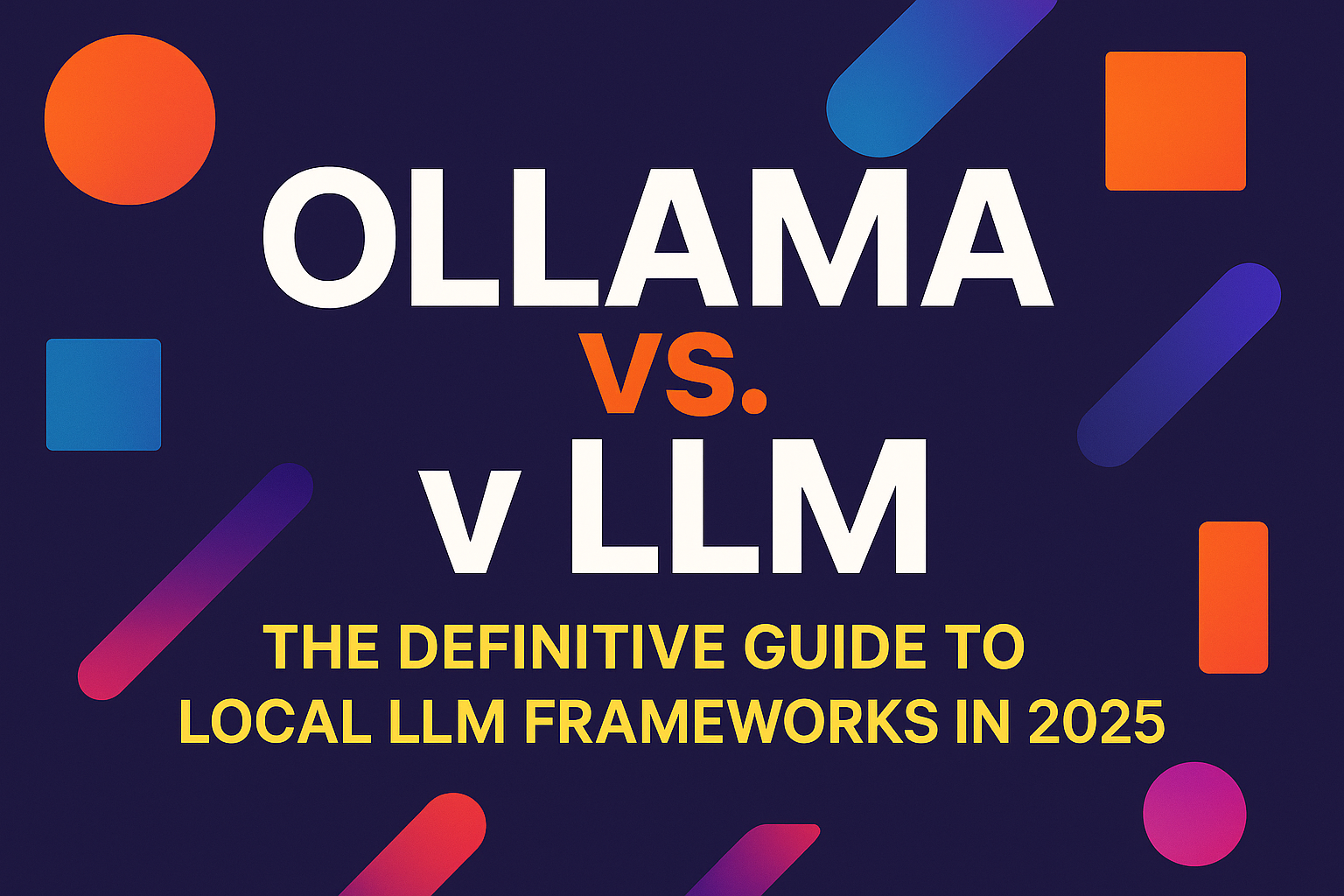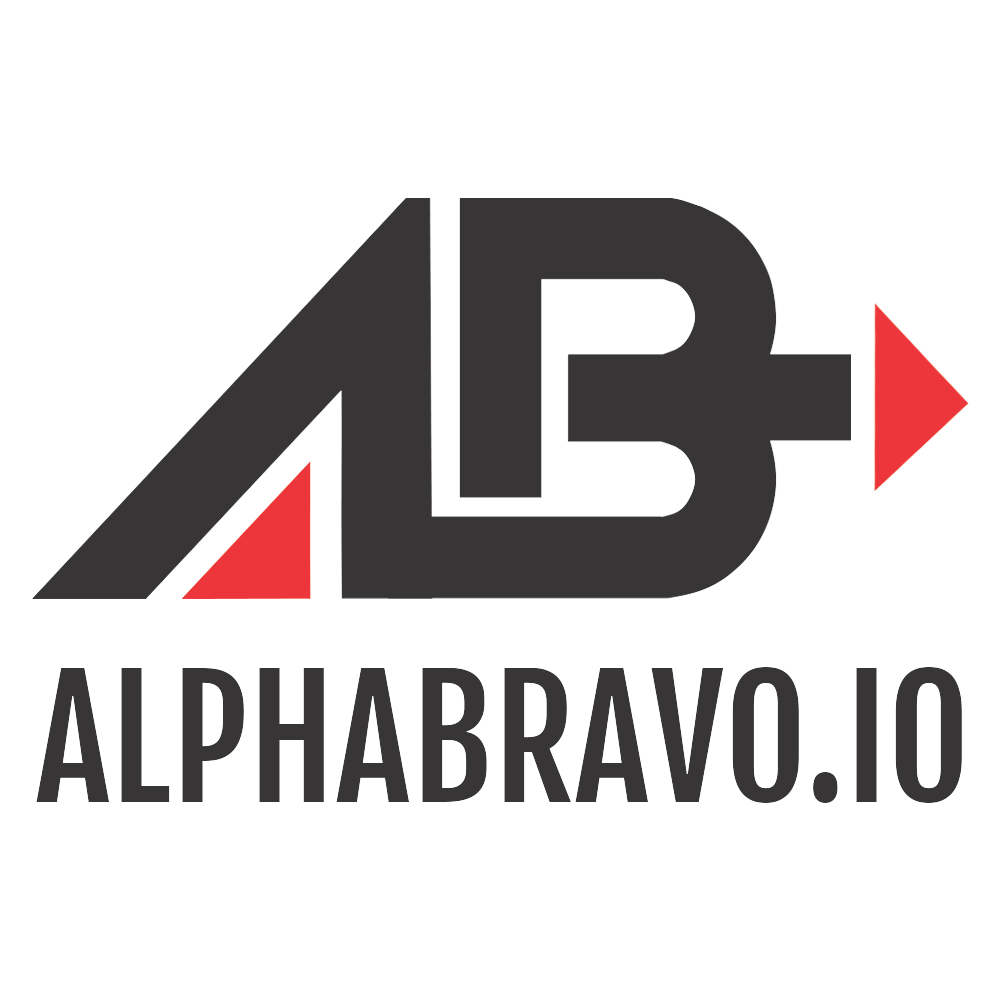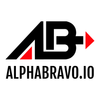Ollama vs. vLLM: The Definitive Guide to Local LLM Frameworks in 2025
Local AI: Securing Tomorrow’s Battlespace, One Token at a Time.

As we navigate through the ever-evolving landscape of artificial intelligence, two heavyweight contenders have emerged in the realm of local large language model (LLM) deployment: Ollama and vLLM. Both frameworks aim to bring powerful AI capabilities to your local infrastructure, but they take distinctly different approaches that make each better suited for particular use cases. This comprehensive comparison will help you understand which tool might be right for your specific needs, whether you're a curious developer, an enterprise architect, or a defense contractor working on classified projects.
The Local LLM Revolution: Setting the Stage
Before diving into the comparison, let's take a moment to understand why local LLM frameworks like Ollama and vLLM have become increasingly important.
Large language models are essentially massive neural networks trained on vast amounts of text data. These models-think GPT-4, Llama, or Gemma-require significant computational resources to run. Traditionally, accessing these models meant sending your data to cloud providers, which raises concerns about privacy, data sovereignty, and operational continuity in disconnected environments.
Local LLM frameworks solve this problem by allowing you to run these powerful models on your own hardware. It's like having your own personal AI assistant that doesn't need to phone home to a third party with your sensitive information. This capability is especially critical for government, defense, healthcare, and financial sectors where data privacy isn't just nice to have-it's non-negotiable.
Ollama: Your Friendly Neighborhood LLM Manager
What Is Ollama, Exactly?
Ollama is an open-source framework designed with simplicity at its core. It allows you to download, run, and manage large language models on your own hardware with minimal fuss. If setting up AI models were like cooking, Ollama would be your meal kit delivery service-everything comes pre-measured and ready to go.
The name "Ollama" might remind you of a friendly llama (the animal mascot associated with many modern LLMs), and that's fitting-it aims to make working with these sophisticated AI systems as approachable as petting a friendly farm animal. Well, almost.
Key Features That Make Ollama Stand Out
Based on the latest available information, Ollama offers several compelling features:
-
Streamlined Model Management: With simple commands like
ollama pull llama3.2, you can download pre-trained models from a growing library including the latest Llama 3.3 (70B parameters), DeepSeek-R1, and various Gemma 3 versions. -
Local-First Architecture: All processing happens on your machine, ensuring your data never leaves your environment-a critical consideration for sensitive applications.
-
Modelfile Customization: Ollama's Modelfile syntax allows you to customize models with specific prompts, parameters, and system messages. Want your AI to respond like Mario from Super Mario Bros.? A few lines in a Modelfile make it possible.
-
Cross-Platform Support: Available for macOS, Windows, and Linux, with Docker images for containerized deployments.
-
REST API: A straightforward API makes integration with applications relatively painless.
-
Multimodal Support: Beyond text, Ollama can handle image inputs with compatible models like Llama 3.2 Vision.
-
Impressive Performance Improvements: Recent updates have delivered significant speed enhancements, with some users reporting a 12x increase in inference speed after updating.
Who Is Ollama For?
Ollama shines in scenarios where simplicity and ease of use take precedence:
- Individual developers exploring LLMs without cloud costs
- Privacy-conscious researchers who need to keep data local
- Small teams prototyping AI applications
- Educational settings where setup complexity would be a barrier
- Offline environments where internet connectivity is limited or unavailable
vLLM: The Performance Powerhouse
What Is vLLM, and Why Should You Care?
vLLM (the "v" stands for "very" as in "very Large Language Model") is an open-source library originally developed in the Sky Computing Lab at UC Berkeley. If Ollama is a meal kit, vLLM is a professional kitchen optimized for high-volume output. It's designed specifically for high-performance LLM inference and serving, with a focus on maximum throughput and minimal latency.
The name might lack the cuddly appeal of Ollama, but what it lacks in warmth it makes up for in raw power. vLLM is the Formula 1 race car of LLM serving frameworks-precision-engineered for speed.
Cutting-Edge Features That Power vLLM
vLLM introduces several innovative technologies that set it apart:
-
PagedAttention: This is vLLM's secret sauce-an innovative memory management technique that significantly improves inference efficiency. Instead of reserving GPU memory for entire sequences, it uses a paging system (similar to how operating systems handle memory) to optimize utilization.
-
Continuous Batching: Rather than waiting for fixed-size batches of requests, vLLM processes requests dynamically as they arrive, maximizing hardware utilization even with varying workloads.
-
Distributed Inference: Support for tensor parallelism and pipeline parallelism allows vLLM to split models across multiple GPUs, enabling the deployment of models too large for a single GPU.
-
Impressive Performance Metrics: The latest release (v0.6.0 as of September 2024) delivered 2.7x higher throughput and 5x faster time per output token on Llama 8B models, and 1.8x higher throughput with 2x less latency on Llama 70B models compared to previous versions.
-
Hardware Flexibility: While optimized for NVIDIA GPUs, vLLM also supports AMD CPUs and GPUs, Intel CPUs, and specialized accelerators like TPUs.
-
OpenAI-Compatible API: Makes transitioning from cloud services to local deployment more straightforward.
-
Advanced Decoding Strategies: Supports parallel sampling, beam search, and other techniques to improve generation quality and speed.
Who Benefits Most From vLLM?
vLLM is particularly well-suited for:
- Production environments requiring maximum throughput
- Services handling many concurrent requests
- Organizations with high-end GPU infrastructure
- Applications where latency is critical
- Large-scale AI deployments
Head-to-Head: How Ollama and vLLM Compare
Now that we've introduced both frameworks, let's put them side by side to understand where each shines and where each might fall short.
Architectural Philosophies
The fundamental difference between Ollama and vLLM lies in their architectural approaches:
Ollama takes an integrated approach, bundling model weights, configurations, and dependencies into self-contained packages designed to "just work" with minimal configuration. It prioritizes user experience over raw performance.
vLLM focuses intensely on the serving layer, particularly memory management optimization with its PagedAttention mechanism. It separates concerns more cleanly but requires more setup and configuration knowledge.
Performance: Speed and Efficiency
When it comes to raw performance, the difference is clear:
vLLM consistently delivers superior throughput and lower latency, especially for concurrent requests. Its PagedAttention technology gives it a significant edge for large models and high-volume workloads. Recent benchmarks showed vLLM achieving 2.7x higher throughput and 5x faster token generation compared to previous versions on Llama 8B models.
Ollama has been making impressive strides in performance optimization, with recent updates reportedly delivering up to 12x speedups for some users. While it may not match vLLM's peak performance, these improvements make it increasingly viable for more demanding use cases.
Ease of Use and Developer Experience
The user experience differs significantly between the two frameworks:
Ollama prioritizes simplicity above all. Installing and running a model typically requires just a couple of commands (e.g., ollama run llama3.2). The Modelfile syntax makes customization straightforward, and the CLI interface is designed for users who may not have deep AI expertise.
vLLM offers more control and optimization options but comes with a steeper learning curve. Setting up vLLM, particularly for distributed inference across multiple GPUs, requires more technical knowledge and configuration.
Hardware Requirements and Compatibility
The frameworks have different hardware appetites:
Ollama is designed to work reasonably well even on consumer-grade hardware. While it benefits from a GPU, it can function on CPU-only setups, making it accessible to more users. The documentation suggests having at least 8GB of RAM for running 7B parameter models.
vLLM is optimized for high-end GPU setups and particularly shines with multiple NVIDIA GPUs. While it technically supports CPU inference, it's not the primary focus and may not deliver optimal performance in CPU-only environments.
Real-World Applications: When to Choose Which Tool
So when should you reach for Ollama, and when is vLLM the better choice? Let's break it down with some practical scenarios.
Ollama Shines When:
-
You're just getting started with LLMs: If you're new to the world of AI and want to experiment without a steep learning curve, Ollama's simplicity is unbeatable.
-
Privacy is your top priority: For applications where data sensitivity is paramount, Ollama's straightforward local deployment ensures information stays within your environment.
-
You're working with limited hardware: Not everyone has access to multi-GPU servers. Ollama works reasonably well even on modest laptops or desktop computers.
-
You need a quick prototype: When speed of development trumps speed of inference, Ollama lets you get up and running with minimal setup time.
-
You're in an air-gapped environment: For completely isolated networks, Ollama's offline capabilities make it particularly valuable.
vLLM Takes the Lead When:
-
Performance at scale is critical: If you're building a production service handling multiple concurrent requests, vLLM's optimized architecture delivers superior throughput.
-
You have high-end GPU infrastructure: vLLM is designed to make the most of powerful hardware, particularly multi-GPU setups.
-
Minimal latency is essential: In applications where response time is critical-like real-time assistants or time-sensitive analysis-vLLM's lower latency gives it the edge.
-
You're serving very large models: The PagedAttention mechanism is particularly valuable for efficiently managing memory with large models (30B+ parameters).
-
You need advanced serving features: The more comprehensive API and optimization options give you more granular control over the serving process.
Hybrid Approaches Worth Considering
In many organizations, a hybrid approach might make the most sense:
- Development vs. Production: Use Ollama for development and prototyping, then deploy with vLLM in production.
- Model Size-Based Routing: Use Ollama for smaller models and vLLM for larger ones where its memory management really shines.
- Scale-Based Selection: Start with Ollama for smaller-scale deployments, transitioning to vLLM as user demand grows.
Private AI for Defense and Government: A Critical Application
The Department of Defense and federal agencies face unique challenges when implementing AI solutions. They need the power of advanced models while maintaining strict control over sensitive data. This is where frameworks like Ollama and vLLM become particularly valuable.
Why Private AI Matters for National Security
For government and defense applications, sending data to third-party cloud services presents unacceptable security risks. Running LLMs locally using frameworks like Ollama and vLLM enables:
-
Data Sovereignty: Sensitive information remains within secure, controlled environments.
-
Operational Security: AI capabilities can be deployed in classified networks and air-gapped systems.
-
Resilience in Disconnected Environments: AI systems can function in DDIL (Disconnected, Degraded, Intermittent, and Limited bandwidth) settings where cloud connectivity isn't reliable.
-
Customization for Classified Missions: Models can be fine-tuned for specific government use cases without exposing sensitive training data.
AI at the Tactical Edge: A Military Advantage
Modern military operations increasingly rely on AI for situational awareness at the "tactical edge"-environments where connectivity may be limited or non-existent. Local LLM frameworks enable:
-
Real-time Intelligence Analysis: Processing sensor data, communications, and other intelligence without relying on remote infrastructure.
-
Enhanced Battlefield Awareness: Combining multiple data streams (text, images, sensor readings) to provide commanders with comprehensive situational understanding.
-
Autonomous Systems Support: Providing decision support to operators in the field based on local data analysis.
According to defense experts, "Using AI frameworks for multimodal data analysis allows different data streams to be analyzed together, offering decision-makers a comprehensive view of an event." This capability becomes particularly critical in contested environments where connection to central command may be compromised.
The Federal Case for Open-Source LLMs
Many federal agencies are finding that open-source LLM frameworks provide the flexibility and control needed for their diverse requirements. Unlike commercial solutions with one-size-fits-all approaches, open-source frameworks like Ollama and vLLM allow agencies to:
-
Adapt to Specific Needs: Each agency has unique requirements that can be addressed through customization.
-
Control Long-term Costs: Avoid ongoing licensing fees for commercial platforms.
-
Ensure Continuity: Reduce dependency on specific vendors and platforms.
As one source notes, "The diverse needs of agencies, combined with the growing power and inherent flexibility of open-source LLMs, position these models as an optimal choice for some government applications."
Looking Forward: The Evolution of Local LLM Frameworks
The landscape of local LLM serving is evolving rapidly. Here's where Ollama and vLLM appear to be heading:
Performance Convergence
While vLLM currently has a performance edge, Ollama is rapidly improving. The reported 12x speedup from recent updates suggests that the performance gap may narrow over time, especially for common use cases.
Expanded Hardware Support
Both frameworks are likely to expand hardware support:
- vLLM is adding better support for non-NVIDIA hardware and improving CPU inference capabilities.
- Ollama will continue optimizing for consumer hardware while adding support for more specialized accelerators.
Advanced Features on the Horizon
We can expect both frameworks to add more sophisticated capabilities:
- Improved Quantization: Reducing model size while maintaining quality, enabling deployment on devices with limited resources.
- Enhanced Multimodal Support: Better handling of images, audio, and other data types for more comprehensive AI capabilities.
- Automated Optimization: Smart defaults that adjust based on available hardware to maximize performance.
The Final Word: Choosing Your Local LLM Champion
Ollama and vLLM represent two different philosophies in the world of local LLM serving. Ollama prioritizes simplicity and accessibility, making powerful AI models available to anyone with a reasonably modern computer. vLLM focuses on pushing the boundaries of performance, enabling production-scale deployments that rival cloud services.
For individual developers, researchers, and those just exploring what LLMs can do, Ollama provides a frictionless entry point with minimal setup and configuration. For organizations building production services with stringent performance requirements, vLLM offers the optimization and scalability needed to handle significant workloads.
In government and defense contexts, both tools enable critical capabilities that would otherwise be impossible due to security and connectivity constraints. By bringing AI to the edge, these frameworks are helping transform everything from battlefield awareness to intelligence analysis.
The beauty of having both options is that you don't necessarily have to choose just one. Many organizations will benefit from using Ollama during development and prototyping, then deploying with vLLM in production environments where performance is critical.
As these frameworks continue to evolve, we can expect the gap between them to narrow in some areas while their distinct strengths become even more pronounced in others. What's certain is that the ability to run powerful AI models locally, whether for privacy, performance, or connectivity reasons, will remain essential as AI becomes increasingly integrated into our systems and processes.
Whether you're a lone developer exploring the capabilities of LLMs on your laptop or architecting AI systems for critical national security applications, Ollama and vLLM represent the cutting edge of what's possible when powerful AI meets local computing. The question isn't which one is better-it's which one better serves your specific needs right now.

